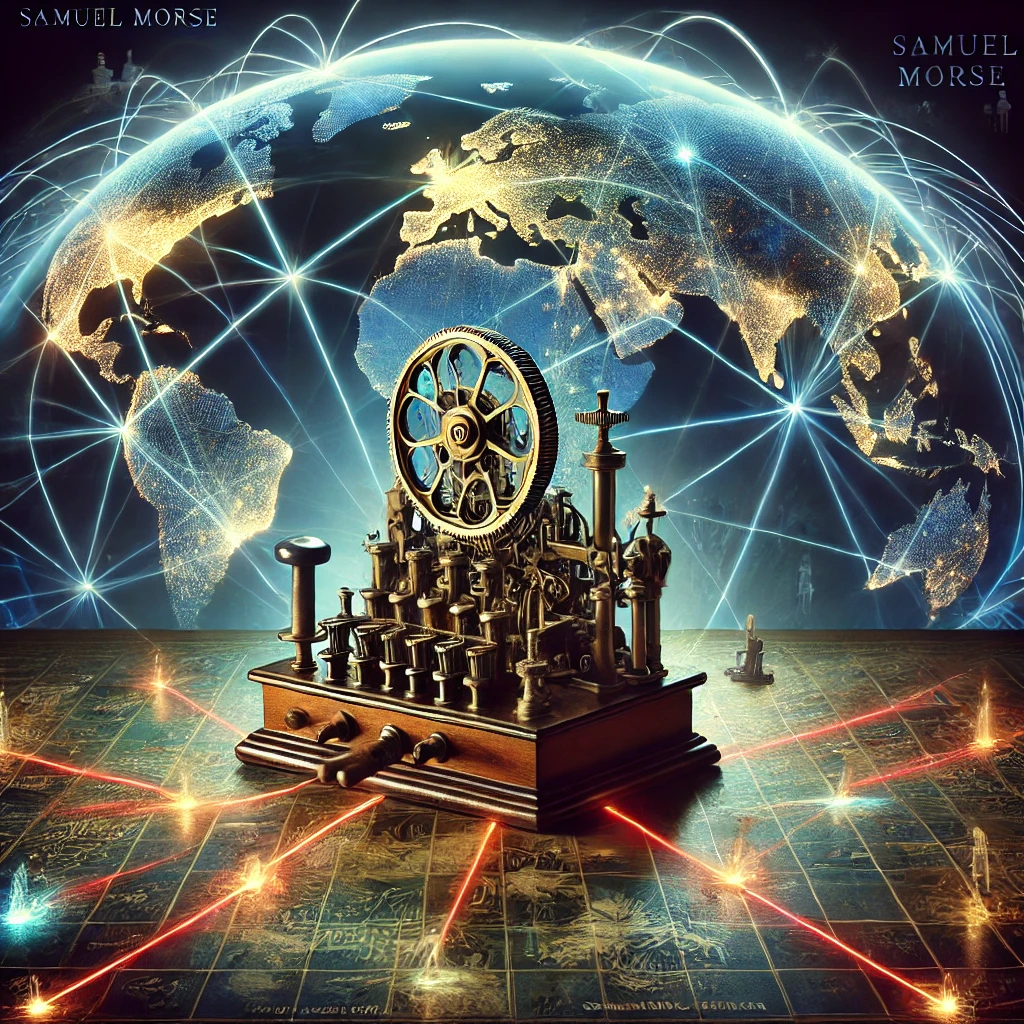On January 6th, 1838, Samuel Morse demonstrated his telegraph for the first time, marking a groundbreaking moment in the history of communication. The telegraph, a device that allowed messages to be sent over long distances using electrical signals, would revolutionize the way people communicated, shaping the future of global interaction. Morse’s invention set the stage for a new era of connectivity, influencing not only the development of communication technologies but also the structure of modern society.

The Creation of the Telegraph
Samuel Morse, an artist by training, became fascinated with the idea of long-distance communication after hearing about the electromagnetic experiments of scientists like Michael Faraday and Hans Christian Ørsted. In the early 1830s, Morse began to develop the concept of using electrical signals to transmit messages over a wire. The key breakthrough came when he, alongside his collaborators, created a system of dots and dashes to represent letters and numbers—what would become the Morse code.
Morse’s invention faced early challenges, including skepticism from the public and difficulties in securing funding. However, his perseverance paid off, and by 1837, he had built a working model of the telegraph. On January 6th, 1838, Morse and his assistant, Alfred Vail, conducted the first successful demonstration of the telegraph at the Speedwell Ironworks in Morristown, New Jersey. During the demonstration, Morse sent a simple message: “A patient waiter is no loser.” This marked the first successful use of electrical telegraphy to transmit information over a distance.

The Impact of the Telegraph on Communication
The telegraph revolutionized communication by overcoming the limitations of traditional methods, such as messengers on horseback or written letters. Prior to the telegraph, messages could take days, weeks, or even months to travel over long distances. With the invention of the telegraph, messages could be sent almost instantaneously over vast distances, fundamentally changing the way people and businesses communicated.
The telegraph’s impact on society was far-reaching. It enabled faster communication across countries and continents, making it possible for governments, businesses, and individuals to stay informed in ways that had previously been unimaginable. The telegraph played a crucial role in the development of the news industry, with newspapers relying on telegraphy to quickly receive updates from reporters in distant locations. It also had a profound impact on global trade and diplomacy, enabling more efficient coordination between countries and regions.
The Legacy of Morse’s Invention
Samuel Morse’s invention of the telegraph paved the way for a range of other innovations in communication technology. The telegraph was the precursor to later inventions like the telephone and the internet, all of which relied on the ability to transmit information quickly and efficiently over long distances. In fact, Morse’s work laid the groundwork for the global communications infrastructure we rely on today.

In addition to its technical legacy, the telegraph also had a lasting cultural impact. The advent of instant communication helped shrink the world, making it feel smaller and more interconnected. People could now exchange information in real-time, fostering greater global awareness and collaboration. While modern communication technologies have advanced far beyond the telegraph, the fundamental concept of connecting people across vast distances remains as relevant today as it was in 1838.
Samuel Morse’s demonstration of the telegraph on January 6th, 1838, marked a transformative moment in human history, revolutionizing long-distance communication and forever altering the way people connected with one another. The telegraph’s impact reached far beyond its initial demonstration, changing the course of business, government, and culture. Today, Morse’s legacy lives on through the continued advancements in communication technologies that have shaped the modern world, underscoring the enduring importance of innovation in connecting people across time and space.
